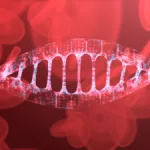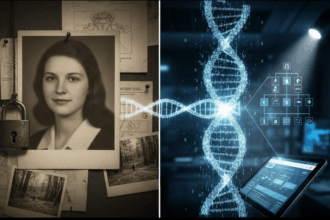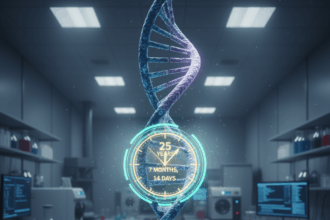In the annals of criminal history, few names evoke as much dread and fascination as Gary Leon Ridgway, the infamous Green River Killer. For nearly two decades, Ridgway unleashed a reign of terror in Washington State, becoming one of America’s most prolific serial killers. His chilling saga of murder and deception left a trail of devastation that would haunt the Pacific Northwest for generations.
- Early Life and Family Background
- The Killing Spree
- Modus Operandi
- The Discovery of the Green River Killer
- The Hunt for the Green River Killer
- Core Team Accounts and Investigative Contributions
- Unexpected Insights from Ted Bundy
- Detailed Suspect Profiling by FBI Special Agent John Douglas
- Testimony from a Survivor
- Trace Evidence Analysis by Skip Palenik
- Ridgway’s Arrest in 2001
- Plea Bargain and Confession
- Legal Proceedings and Sentencing
- Unsolved Mysteries and Continuing Questions
- Lessons from the Green River Killer
- Forensic Advancements
- Victim Advocacy and Social Perception
- Investigative Reforms
- Legacy and Unsolved Mysteries
- Current Incarceration Status of Gary Ridgway
- Conclusion
- FAQs
From 1982 to 1998, the streets of Seattle and Tacoma became hunting grounds for a predator who targeted society’s most vulnerable. As bodies surfaced along the Green River and surrounding areas, a community was gripped by fear, and law enforcement faced one of their most challenging investigations. Who was the Green River Killer? How did Ridgway manage to elude capture for so long? What drove him to commit such horrific acts? And what impact did his crimes have on the victims’ families and the entire region?
In this gripping exploration of the Green River Killer case, we’ll delve into Ridgway’s dark past, examine the extensive killing spree that shocked the nation, and uncover the investigative challenges that frustrated authorities for years. We’ll also look at the dramatic arrest and conviction that finally brought this Seattle serial killer to justice and reflect on the lasting impact and legacy of one of America’s most notorious serial murderers.

Early Life and Family Background
Gary Leon Ridgway was born on February 18, 1949, in Salt Lake City, Utah. Still, he spent his formative years in SeaTac, Washington—a period marked by personal challenges and early signs of violent behavior. Gary Ridgway’s childhood was shaped by a tumultuous household, where he witnessed violent arguments between his parents, which left an indelible impression on his developing psyche. His father, a bus driver, frequently complained about the presence of sex workers, while ongoing marital conflicts further destabilized his home environment. These early experiences likely contributed to the dark tendencies that later defined his criminal behavior.
From a young age, Ridgway faced significant obstacles. He struggled academically and suffered from prolonged bed-wetting until the age of 13, an issue that his mother, Mary Rita Ridgway, managed meticulously. During his adolescence Period of transition, from the beginning of puberty until sexual maturity. Read Full Definition, he developed conflicting feelings of anger and sexual attraction toward his mother—a disturbing mix of emotions that even led him to fantasize about killing her. In addition to these psychological challenges, Ridgway engaged in early acts of arson"Arson" is a criminal act involving intentionally and unlawfully setting fire to buildings, structures, or other property types. It is a serious offense and is considered a crime in most legal jurisdictions. Here are key Read Full Definition and animal cruelty, behaviors that served as ominous precursors to the brutality he would later unleash. His constant comparison with an older brother—perceived as more accomplished—only deepened his sense of inadequacy, further fueling his sociopathic tendencies. Moreover, a violent stabbing incident involving a young child provided an early, grim indication of the potential for extreme brutality that would eventually characterize his reign of terror.
Period of transition, from the beginning of puberty until sexual maturity. Read Full Definition, he developed conflicting feelings of anger and sexual attraction toward his mother—a disturbing mix of emotions that even led him to fantasize about killing her. In addition to these psychological challenges, Ridgway engaged in early acts of arson"Arson" is a criminal act involving intentionally and unlawfully setting fire to buildings, structures, or other property types. It is a serious offense and is considered a crime in most legal jurisdictions. Here are key Read Full Definition and animal cruelty, behaviors that served as ominous precursors to the brutality he would later unleash. His constant comparison with an older brother—perceived as more accomplished—only deepened his sense of inadequacy, further fueling his sociopathic tendencies. Moreover, a violent stabbing incident involving a young child provided an early, grim indication of the potential for extreme brutality that would eventually characterize his reign of terror.
Key factors that shaped Ridgway’s psychological profile include:
- Maternal Relationship: Inappropriate intimacy and conflicting emotions towards his mother contributed to deep-seated emotional turmoil.
- Sibling Comparison: Constant comparisons with his older brother fostered enduring feelings of inadequacy.
- Academic Struggles: His difficulties in school instilled a fear of intellectual inferiority.
- Early Behaviors: Acts such as arson, animal cruelty, and a violent stabbing incident were early indicators of his sociopathic tendencies.
A Troubled Adult Life
As Ridgway transitioned into adulthood, his troubles continued. After a stint in the U.S. Navy (1970–1971), where he frequented sex workers in the Philippines and contracted gonorrhea, Ridgway married three times, each union collapsing due to infidelity. His religious conversion during his second marriage did little to curb his obsession with sex workers, whom he simultaneously despised and sought out. By the late 1970s, Ridgway began assaulting sex workers, later escalating to murder.
His lust for power and control over vulnerable women led him to commit a series of horrifying murders that terrorized the Pacific Northwest for decades. His job as a truck painter at Kenworth Truck Company provided both mobility for disposing of bodies and familiarity with secluded areas in King County.
The Killing Spree
Gary Leon Ridgway’s reign of terror spanned nearly two decades, from 1982 to 1998, during which he is believed to have murdered at least 71 women—49 of these victims confirmed by law enforcement. His killing spree, concentrated in the early 1980s and continuing sporadically until the late 1990s terrorized Washington State and left an indelible mark on its history. The question of how many people did the Green River Killer kill has haunted investigators and the public for years, with the true number potentially being even higher than the confirmed cases.
Timeline of Murders
Ridgway’s murderous activities began in 1982 and persisted until 1998. During this period, the bodies of vulnerable women were discovered throughout the region, creating a growing sense of panic and urgency among local authorities. The persistent string of killings led to the formation of a dedicated task force to investigate the case, marking one of the most challenging serial murder investigations in American history.
Victim Profile and Selection
Ridgway specifically targeted the most vulnerable members of society. His victims were primarily:
- Sex Workers: Women engaged in prostitution who were often marginalized and overlooked by society.
- Underage Runaways: Young individuals on the fringes of stability and protection.
- Young Women (Aged 15 to 36): Typically, those who, due to their life circumstances, were less likely to be missed immediately.
His method of luring victims was particularly disturbing. Ridgway would sometimes show potential victims a photograph of Gary Ridgway’s son—a calculated tactic to gain their trust before committing his brutal acts. This manipulative approach underscored the cold calculation behind his crimes.
Modus Operandi
Ridgway’s method of murder was both consistent and exceptionally brutal. He primarily used strangulation to kill his victims, a method that not only ensured a swift death but also allowed him to exert total control over his victims. After murdering them, he often returned to the crime scenes to engage in acts of necrophiliaNecrophilia is a sexual attraction or an act involving corpses. Read Full Definition, further compounding the horror of his crimes. The disposal of bodies was methodical; victims were left in wooded areas, frequently in clusters, and in various public locations to confuse and mislead law enforcement. Ridgway also manipulated evidence Evidence is any form of proof, such as objects, materials, or scientific findings, presented to establish or disprove a fact in a legal proceeding. It is used to reconstruct events and link or exclude individuals Read Full Definition at the scenes, a tactic that frustrated investigators and prolonged the case.
Evidence is any form of proof, such as objects, materials, or scientific findings, presented to establish or disprove a fact in a legal proceeding. It is used to reconstruct events and link or exclude individuals Read Full Definition at the scenes, a tactic that frustrated investigators and prolonged the case.
Detailed Murder Methods
Ridgway chose his targets carefully and executed his crimes through a systematic process that evolved over his twenty-year killing spree. His operations can be broken down into several key elements:
Location Selection:
Ridgway killed his victims in three primary settings: his home, his truck, and remote spots around King County. He engaged in sexual encounters with his victims—often using a tactic of showing them a photograph of his son to gain trust—before attacking them. His trademark strangulation, often executed from behind, became a distinctive hallmark of his crimes. His intimate knowledge of the area allowed him to identify hidden locations where he could commit murders with minimal risk of detection.
Evidence Disposal Techniques:
The killer employed sophisticated methods to eliminate physical evidence. For instance, he clipped his victims’ fingernails to reduce the chance of collecting DNA DNA, or Deoxyribonucleic Acid, is the genetic material found in cells, composed of a double helix structure. It serves as the genetic blueprint for all living organisms. Read Full Definition from defensive wounds. Ridgway also deliberately planted extraneous items at the crime scenes, including gum, cigarettes, and other materials, to misdirect investigators. In some instances, he even transported remains across state lines to Oregon, a strategy designed to confuse the trail and disrupt jurisdictional investigations. His work as a spray painter at the Kenworth truck factory provided him with unexpected expertise; investigators later identified unique paint particles on victims’ clothing that linked back to his workplace.
DNA, or Deoxyribonucleic Acid, is the genetic material found in cells, composed of a double helix structure. It serves as the genetic blueprint for all living organisms. Read Full Definition from defensive wounds. Ridgway also deliberately planted extraneous items at the crime scenes, including gum, cigarettes, and other materials, to misdirect investigators. In some instances, he even transported remains across state lines to Oregon, a strategy designed to confuse the trail and disrupt jurisdictional investigations. His work as a spray painter at the Kenworth truck factory provided him with unexpected expertise; investigators later identified unique paint particles on victims’ clothing that linked back to his workplace.
Geographical Area of Operations
The crimes committed by Ridgway were spread across several key locations in Washington State, each serving a specific purpose in his operations. A Green River Killer map would highlight:
- Green River Area: The primary dumping ground for many of his victims, lending the killer his infamous moniker.
- Seattle and Tacoma: The main hunting grounds where he abducted his victims.
- King County: Several clusters of victims were found, indicating his preference for areas familiar to him..
- Star Lake and Highway 18: Locations where victims were last seen or found, adding to the puzzle of his movements, emphasizing his use of public and accessible areas to mislead investigators.
- SeaTac Airport Vicinity: An additional area used for body disposal, emphasizing the brazen nature of his crimes.
Victims were often last seen near highways and other well-known public areas, highlighting not only their vulnerability but also the audacity of Ridgway’s operations.
Over time, Ridgway refined his methods further. He sometimes scattered victims’ remains across different locations to complicate identification and disrupt investigative patterns. His ability to recall detailed mental maps of disposal sites—mostly in South King County—allowed him to revisit these sites regularly, which eventually enabled investigators to establish consistent patterns even as urban development and fading memories complicated the overall picture.
The Discovery of the Green River Killer
The case took a dramatic turn in July 1982 when the lifeless body of 16-year-old Wendy Caulfield was found floating in Seattle’s Green River.
The case took a dramatic turn in July 1982, when two boys made a horrific find that summer day. Their discovery would launch one of America’s largest serial murder investigations. The body of 16-year-old Wendy Lee Coffield was found floating in Washington’s Green River with blue jeans tied around her neck.
In the weeks that followed, the discovery of four more victims along the riverbanks—each a victim of strangulation—sent shockwaves through the community. The bodies of Debra Lynn Bonner, Marcia Faye Chapman, Opal Charmaine Mills, and Cynthia Jean Hinds were all within a one-mile stretch of the river. Detective David Reichert arrived at the scene on August 15. He saw a disturbing sight – Marci Chapman’s body lay in shallow water next to 17-year-old Cynthia Hinds, and Opal Mills was hidden in nearby undergrowth. As the body count rose, fear gripped the region, and authorities were compelled to form the Green River Task Force to coordinate the exhaustive search for the elusive killer.
Formation of the task force
King County Sheriff’s Office responded by creating the Green River Task Force4. Portland’s discovery of two additional victims in 1985 brought FBI involvement. January 1986 marked a turning point – ten FBI agents joined the investigation, now designated Major Case 77, GREENMURS.
The Prolific Killing Spree
During a particularly intense period spanning two years, Ridgway’s spree claimed the lives of over 40 women. Despite maintaining an outwardly everyday existence as a truck painter, he managed to conceal his heinous activities for years. His ability to blend into society while committing such unspeakable crimes left law enforcement baffled, and the public horrified. The media soon dubbed him the “Green River Killer” after the initial discovery of multiple victims near the Green River, a name that would become synonymous with his monstrous legacy.
The Hunt for the Green River Killer
Detectives spent decades tracking down the elusive Green River Killer. Over the course of the investigation—one of the largest serial murder cases in U.S. history—authorities chased countless leads and scrutinized over 10,000 pieces of evidence along with 40,000 tip sheets. Despite the many challenges and false leads encountered along the way, the case ultimately turned on a series of breakthroughs that reshaped forensic investigations.
Original Suspects and Early Leads
Gary Ridgway first caught investigators’ attention in 1983 when 18-year-old Marie Malvar disappeared. Her boyfriend later reported seeing Ridgway’s truck near his residence, prompting detectives to focus on his connections to the victims. Although Ridgway was questioned thoroughly—and even passed a polygraph test in 1984—he consistently denied any involvement in the killings. In 1982, another woman came forward reporting that a man carrying Kenworth employee identification attempted to strangle her after a sexual encounter. By 1987, the accumulating evidence was strong enough for investigators to obtain a warrant to search Ridgway’s home, vehicles, and workplace.
However, in 2003—years after Malvar’s disappearance—Ridgway confessed that during his initial interrogation, he had concealed scratches on his arm caused by Malvar as she fought for her life. To cover this evidence, he admitted to burning the scratches with battery acid once detectives had left.
Breakthrough in DNA Evidence
The investigation encountered significant setbacks through the 1990s, including the disbanding of the Green River Task Force amid repeated requests for further forensic testing that were largely ignored. Yet, a few dedicated detectives never abandoned the case.
The turning point arrived in the early 2000s with groundbreaking advancements in DNA profiling technology. Although Ridgway had been a suspect since 1982, early DNA tests in 1987 proved inadequate for making a definitive link. By 2001, however, improved forensic techniques enabled investigators to re-examine previously collected evidence, ultimately matching Ridgway’s DNA to samples from three separate victims. The match came when DNA testing linked his saliva to sperm found on three victims – two from the river in 1982 and another from a dumpsite in 1983. This breakthrough not only provided irrefutable physical evidence linking Ridgway to the murders but also underscored the limitations of relying solely on traditional criminal profiling methods in complex serial murder cases.
Core Team Accounts and Investigative Contributions
The investigation into the Green River Killer benefited from a diverse core team whose expertise provided critical breakthroughs at various stages of the case.
Unexpected Insights from Ted Bundy
An unexpected yet significant contribution came from imprisoned serial killer Ted Bundy in 1984. During interviews, Bundy offered a chilling explanation of the killer’s psychology. He correctly predicted that the perpetrator would return to dump sites to engage in necrophilia with his victims—and he advised police to stake out fresh graves. Bundy’s insights, although controversial, later proved to be remarkably prescient and provided investigators with a psychological framework that guided subsequent surveillance strategies.
Detailed Suspect Profiling by FBI Special Agent John Douglas
The investigation also greatly benefited from the work of FBI Special Agent John Douglas, who provided a detailed suspect profile. Douglas’s expertise in behavioral analysis and criminal profiling helped narrow down the characteristics of the killer, contributing to a more focused investigation that eventually zeroed in on Gary Ridgway. His profile underscored key traits—such as the killer’s familiarity with certain areas and his ritualistic disposal of bodies—which were later corroborated by forensic evidence.
Testimony from a Survivor
Another vital component of the case was the testimony from a survivor who identified Ridgway in a photo lineup. This eyewitness account provided concrete evidence that helped connect Ridgway to the Green River murders, reinforcing the investigative narrative developed by law enforcement. Such direct testimony was critical in validating the physical evidence and bolstering the overall prosecution case.
Trace Evidence Analysis by Skip Palenik
The work of trace evidenceTrace evidence - Physical evidence that results from the transfer of small quantities of materials (e.g., hair, textile fibers, paint chips, glass fragments, gunshot residue particles). Read Full Definition expert Skip Palenik was instrumental in linking Ridgway to the murders. Following Ridgway’s arrest in November 2001, Palenik analyzed paint particles from Ridgway’s workplace and vehicles. His analysis resulted in the creation of a reference library, which investigators used to compare with fragments found at various dump sites. This trace evidence, when combined with DNA matches, not only led to additional charges against Ridgway but also significantly strengthened the prosecution’s case.
Ridgway’s Arrest in 2001
The new forensic capabilities culminated on November 30, 2001, when law enforcement finally apprehended Gary Leon Ridgway. He was captured while leaving his workplace at a Kenworth truck factory in Renton, Washington—a moment that effectively ended a nearly two-decade-long manhunt. The decisive DNA evidence, which irrefutably connected him to several of the Green River murders, provided long-awaited validationValidation, often referred to as method validation, is a crucial process in the laboratory when introducing a new machine, technology, or analytical technique. It involves a series of systematic steps and assessments to ensure that Read Full Definition for the persistent efforts of the remaining detectives. Ridgway’s arrest brought renewed hope and a measure of closure to the families of his numerous victims, demonstrating the transformative impact that technological progress can have on cold case investigations.
Plea Bargain and Confession
Following his arrest, Ridgway entered into a plea bargain with prosecutors that had far-reaching implications for the case and the victims’ families. Under this agreement, he agreed to confess to his crimes and lead authorities to the remains of his victims in exchange for avoiding the death penalty. Ridgway ultimately admitted to murdering at least 71 women over a span from the early 1980s to the late 1990s. His confessions provided crucial insights into his chilling modus operandi:
- Targeting Vulnerable Women: He primarily preyed on sex workers and runaways.
- Manipulative Tactics: Ridgway would show potential victims a photograph of his son to gain their trust.
- Method of Murder: His preferred method was strangulation, and he often returned to the crime scenes to commit acts of necrophilia.
- Evidence Manipulation: He deliberately altered crime scenes, complicating the work of investigators.
Legal Proceedings and Sentencing
The legal process reached its climax in December 2003 when Ridgway was convicted on 49 counts of aggravated first-degree murder. His conviction cemented his reputation as one of the most prolific serial killers in U.S. history. As part of his plea bargain, Ridgway received 49 life sentences without the possibility of parole, ensuring that he would spend the rest of his life in prison. Despite this, Ridgway’s confessions have continued to spark efforts to link him to additional unsolved murders, leaving some questions unanswered about the full extent of his crimes. While incarcerated, Ridgway has continued to offer chilling insights into his twisted psyche through Gary Ridgway’s interviews.
Unsolved Mysteries and Continuing Questions
Even with Ridgway’s comprehensive confessions and subsequent conviction, several mysteries remain. Some victims’ cases still lack closure, and Ridgway has been considered a suspect in other unsolved murders. The actual scope of his violent actions may never be known entirely, leaving lingering questions for the families of the missing and murdered. This aspect of the case continues to drive the conversation about the need for ongoing forensic re-evaluation and the evolution of investigative techniques.
Lessons from the Green River Killer
The case of Gary Ridgway, the Green River Killer, has taught law enforcement and society numerous lessons that extend far beyond the realm of serial murder investigations. These lessons have spurred improvements in forensic science Discover the fascinating field of Forensic Science, the application of scientific principles to legal matters. This post delves into its many disciplines, from DNA analysis to crime scene investigation, its importance in the justice system, Read Full Definition, victim advocacy, and investigative reforms and have raised enduring questions about unresolved cases.
Discover the fascinating field of Forensic Science, the application of scientific principles to legal matters. This post delves into its many disciplines, from DNA analysis to crime scene investigation, its importance in the justice system, Read Full Definition, victim advocacy, and investigative reforms and have raised enduring questions about unresolved cases.
Forensic Advancements
One of the most significant lessons from the Green River case is the revolutionary impact of DNA profiling
Victim Advocacy and Social Perception
The Green River Killer case also highlighted the tragic reality of victim neglect, particularly among marginalized populations. Many of Ridgway’s victims were vulnerable women—sex workers, runaways, and individuals from low-income backgrounds—who were often dismissed by society and, at times, by the authorities. This neglect reinforced a social perception that certain lives are less valuable or newsworthy. As a result, the case has driven a stronger call for victim advocacy and the prioritization of missing persons reports regardless of the victims’ backgrounds. Enhancing support for vulnerable populations and destigmatizing sex work are now seen as critical steps in preventing similar tragedies in the future.
Investigative Reforms
Another enduring lesson is the importance of investigative persistence and inter-agency collaboration. The disbanding of the original Green River Task Force in the early 1990s, despite persistent efforts by some dedicated detectives, demonstrates how fluctuating resources and administrative changes can delay justice. The case ultimately spurred reforms in data Information in analog or digital form that can be transmitted or processed. Read Full Definition management, evidence collection, and communication across jurisdictions. Law enforcement agencies now emphasize the continuous integration of emerging forensic technologies and maintaining robust, flexible investigative teams capable of sharing information across regional boundaries. Regular task force conferences and improved data coding systems have since been adopted to prevent “linkage blindness” in serial murder investigations.
Information in analog or digital form that can be transmitted or processed. Read Full Definition management, evidence collection, and communication across jurisdictions. Law enforcement agencies now emphasize the continuous integration of emerging forensic technologies and maintaining robust, flexible investigative teams capable of sharing information across regional boundaries. Regular task force conferences and improved data coding systems have since been adopted to prevent “linkage blindness” in serial murder investigations.
Legacy and Unsolved Mysteries
The case leaves behind a lingering legacy of unsolved mysteries despite Gary Ridgway’s extensive confessions and subsequent conviction. Ridgway himself confessed to many more murders than those for which he was convicted, and authorities continue to work on identifying additional victims. This enduring uncertainty has underscored the need for ongoing forensic research and cross-jurisdictional collaboration to resolve the fates of those still unaccounted for. The unresolved aspects of the case serve as a stark reminder that, even with modern technology, some questions about serial crimes remain unanswered, prompting continued efforts to revisit and reanalyze cold case evidence.
Current Incarceration Status of Gary Ridgway
Gary Leon Ridgway remains incarcerated, serving 49 life sentences without the possibility of parole. According to the most recent updates, he is held at the Washington State Penitentiary in Walla Walla. In September 2024, Ridgway was briefly transferred from Walla Walla to King County Jail in Seattle on an “institutional hold” — a measure used to facilitate investigations or other administrative purposes — before being returned to the penitentiary. Despite these short-term transfers, his status as a convicted serial killer serving consecutive life sentences remains unchanged. For those wondering, “Is Gary Ridgway still alive,” the answer is yes. As of Gary Ridgway’s 2024 updates, he continues to serve his sentence, with his current age being 75 years old.
Conclusion
The Green River Killer case has left an indelible mark on forensic science, victim advocacy, and law enforcement practices. The groundbreaking use of DNA profiling ultimately broke the decades-long impasse in the investigation, leading to Gary Ridgway’s arrest and a plea bargain that spared him the death penalty in exchange for crucial confessions and leads. The case also exposed deep societal issues, particularly regarding the devaluation and neglect of vulnerable populations such as sex workers and runaways.
Lessons from this tragic series of events have driven significant reforms—improving evidence collection, fostering inter-agency collaboration, and reinforcing the importance of treating every victim with dignity regardless of their background. While Ridgway’s extensive crimes have brought pain to countless families, his capture and the ensuing investigative advancements continue to catalyze change in how the criminal justice system addresses and prevents serial murders. These lessons remind us that, beyond the forensic breakthroughs, there remains an ongoing imperative to ensure that all victims are valued, their stories are told, and society works collectively to protect its most vulnerable members.
The Green River Killer case stands as a stark reminder of the devastation that serial killers who target prostitutes can inflict on communities. It draws comparisons to other notorious cases, such as that of Ted Bundy, highlighting the need for continued vigilance and improved investigative techniques in the face of such heinous crimes. As we reflect on the Green River Killer’s victims and the long road to justice, we are reminded of the importance of remembering these individuals not just as statistics but as human beings whose lives were cut tragically short by one of the most prolific serial killers in American history.
FAQs
Who is Gary Leon Ridgway, and why is he so famous?
Gary Leon Ridgway, also known as the Green River Killer, is one of America’s most prolific serial killers. He unleashed a reign of terror in Washington State for nearly two decades, leaving a trail of devastation that would haunt the Pacific Northwest for generations.
What was the modus operandi of the Green River Killer?
Ridgway primarily used strangulation to kill his victims, a method that allowed him to exert total control over his victims. After murdering them, he often returned to the crime scenes to engage in acts of necrophilia. He also manipulated evidence at the scenes, a tactic that frustrated investigators and prolonged the case.
How was Gary Leon Ridgway finally apprehended?
Gary Leon Ridgway was finally apprehended on November 30, 2001, when law enforcement captured him while leaving his workplace at a Kenworth truck factory in Renton, Washington. This was made possible by significant advancements in DNA profiling technology, which linked Ridgway’s DNA to three victims.
What is Gary Ridgway’s current incarceration status?
Gary Leon Ridgway remains incarcerated, serving 49 life sentences without the possibility of parole. He is held at the Washington State Penitentiary in Walla Walla. As of the most recent updates in 2024, he continues to serve his sentence, with his current age being 75 years old.












